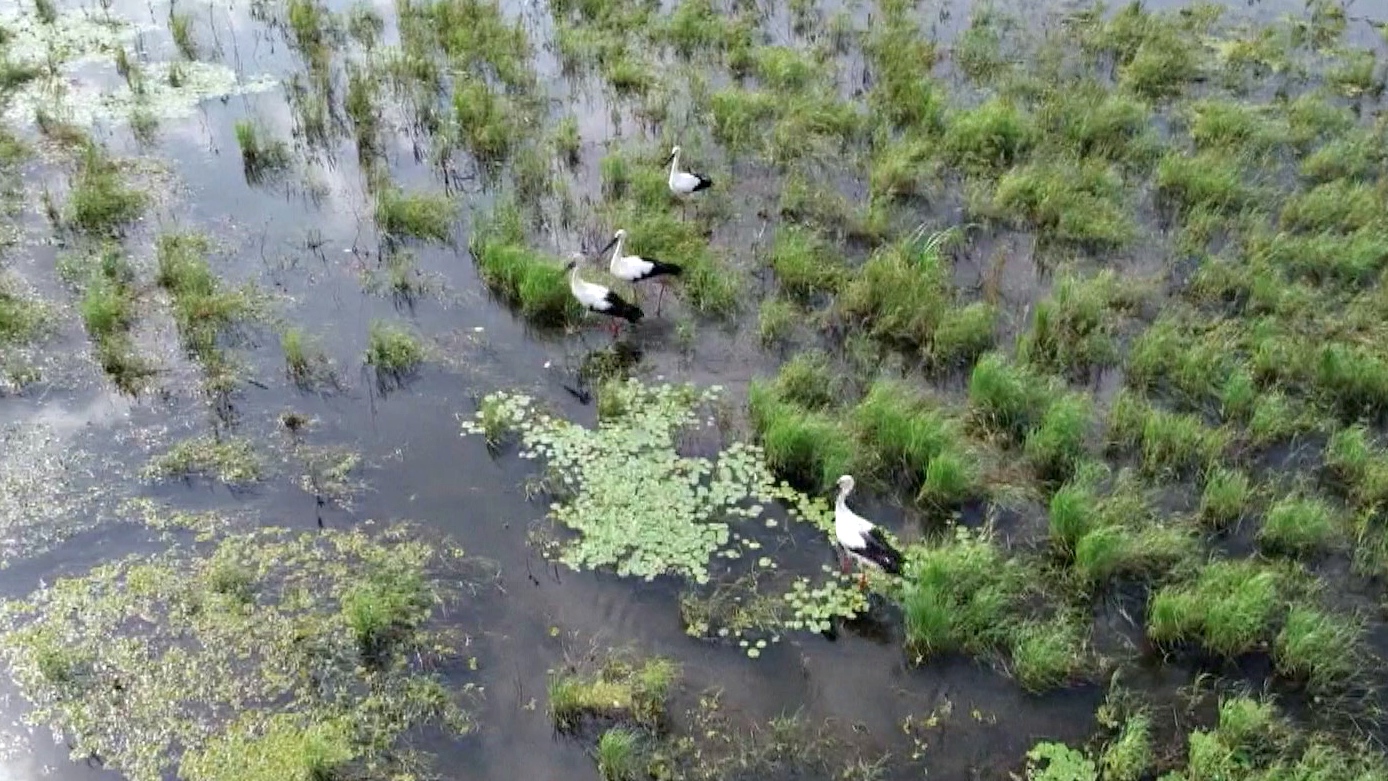00:51

Over 1,000 oriental white storks have settled on a nature reserve in northeast China's Heilongjiang Province.
Oriental white storks prefer a clean environment and are very sensitive to its changes. Therefore, it has become a species indicative of the ecological quality of wetlands. The recent influx of oriental white storks at the Naolihe Nature Reserve indicates the gradual improvement of the local ecology and environment.
"Water sources have been rehabilitated rapidly in the Naolihe Nature Reserve. Its aquatic organisms have increased, capable of providing abundant food for birds. That is why more and more oriental white storks are settling down here," said Wang Dongjian, head of a management station of the reserve.
In recent years, in order to attract oriental white storks to settle down and reduce human disturbance, the nature reserve put up about 1,000 artificial nests in such wetlands as the Xingkai Lake, Naoli River and Zhenbao Island. Besides, as the core area of the Sanjiang Plain, the Naolihe Nature Reserve has also devoted greater efforts to return the wetland to its original size.
The oriental white stork is a species under the first-class state protection in China. It has a population of less than 4,000 worldwide. The two primary breeding areas are the Sanjiang Plain in northeast China and the Russian Far East.
(Cover image is a screenshot.)
(If you want to contribute and have specific expertise, please contact us at nature@cgtn.com.)